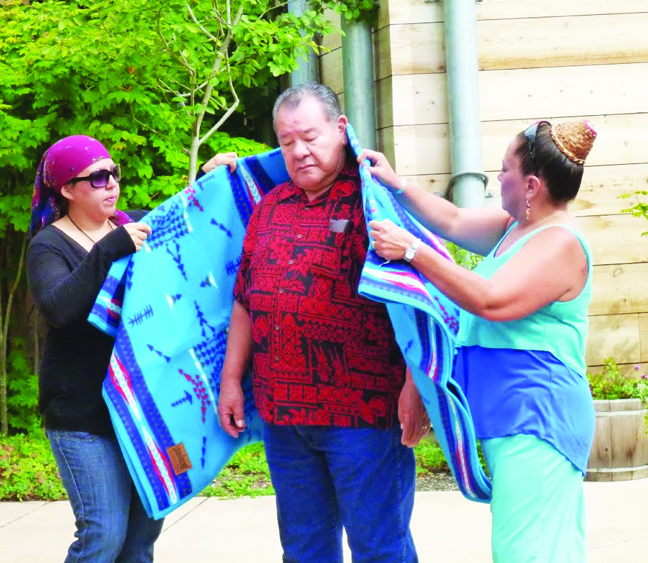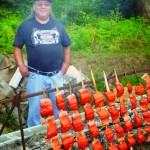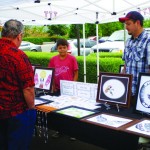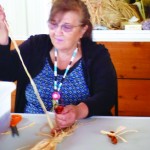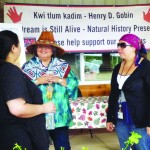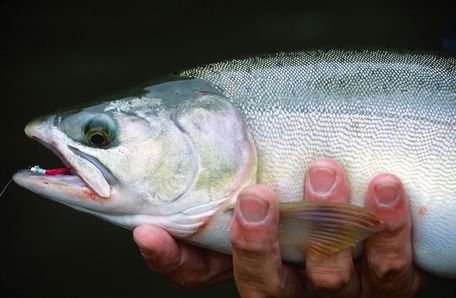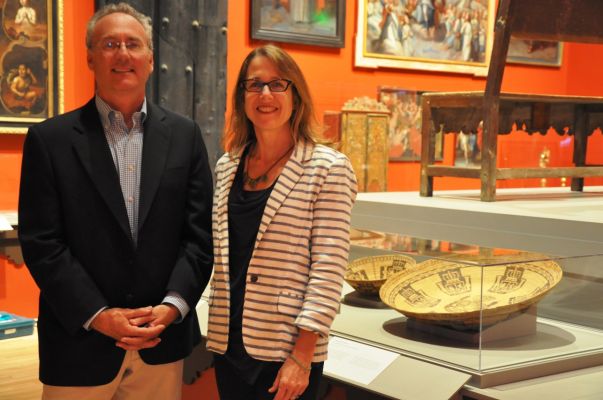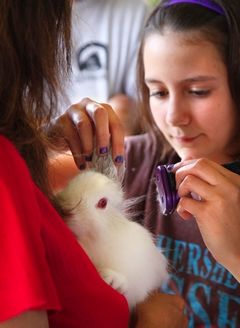Source: Native News Network
TAHLEQUAH, OKLAHOMA – Five stickball teams from Oklahoma and Mississippi will showcase their skills this Saturday, August 24, in the inaugural Cherokee National Holiday men’s stickball tournament at Sequoyah Schools’ Thompson Field.
Citizens play a social game of stickball during the 60th Cherokee National Holiday.
“If we don’t show everyone our traditional games, we will lose them,”
said stickball tournament coordinator Marcus Thompson, who will also play with his team, the Nighthawks.
“Men’s stickball is the roughest sport there is, but we want people to know you can still play the game and that it is fun.”
Stickball was traditionally used to settle disputes or prepare for war. Today, teams of 20-30 people take the field and play an hour-long game consisting of four 15 minute quarters or two 30 minute halves.
The object is to hit the pole in the center of the field by throwing the ball with stickball sticks or running the ball and touching the pole while possessing the ball. The team with the most points at the end of the game wins.
The double-elimination tournament using traditional Choctaw rules will start at 8:00 am. Admission is free.
Social stickball games will also be played at Sequoyah Schools’ football field at 8:00 pm and 9:00 pm, August 31.
Other sporting events at the 61st Cherokee National Holiday August 30-September 1 include the following:
Traditional Events
- Finals in the marble tournament will be held at 9 am, August 31, at the Cherokee Heritage Center. For more information, call Phil King at 918.837.1940.
- Cornstalk shoot competition will be held at 7:30 am west of the W.W. Keeler Complex on August 31-September 1, with registration at 7:30 am and competition at 8:00 am. For more information, call Charolette Jackson at 918.316.2932.
- Horseshoe pitch competition will be held west of the W.W. Keeler Complex at 9:00 am on August 31. For more information, call Jody Slover at 918.822.2428.
Non-traditional Events
- 5K Holiday Veterans Run will begin at the Cherokee Nation War Memorial on August 31. Registration begins at 6:00 am and race starts at 7:30 am. Cost is $20 on the day of the race. For more information, email Hillary Mead at Hillary-fry@cherokee.org.
- Co-ed volleyball tournament will be played west of the Cherokee Nation W.W. Keeler Complex starting at 9:00 am, August 31. Entry deadline is August 23. For more information, call Denise Honawa at 918.816.1995.
- 3 on 3 basketball tournament on August 30-31 at the Cherokee Nation Male Seminary Recreation Center. For more information, call Kim Arneecher at 479.427.9494.
- Cherokee National Holiday softball tournaments will be played at the Cherokee Nation Softball Complex near Sequoyah Schools. The fast-pitch tournaments will be played August 23-25, and slow-pitch tournaments August 30-September 1. For more information, call Sherwin Johnson at 918.696.5760 or Crystal Bogle at 918.316.1940.
- Children’s fishing derby will held August 31 from 7:30 am to noon at the pond east of the W.W. Keeler Complex. Angler Jason Christie will be on site to take photos and sign autographs, and 300 fishing poles will be given out to participants. For more information, email Ryan Callison at ryan-callison@cherokee.org.
- Three golf tournaments will be hosted at Cherokee Springs Golf Course August 29-31. The Thursday tournament will be a senior two man scramble and the Friday tournament a two man scramble open to all ages. The Saturday tournament will be a four man scramble with tee times at 8:00 am and 1:00 pm. Entry fee for all tournaments is $40 for golf course members at Cherokee Springs or Cherokee Trails and $50 for non-members, and all entries must be pre-paid. For more information, call Tyler Crouch at 918.456.5100.








